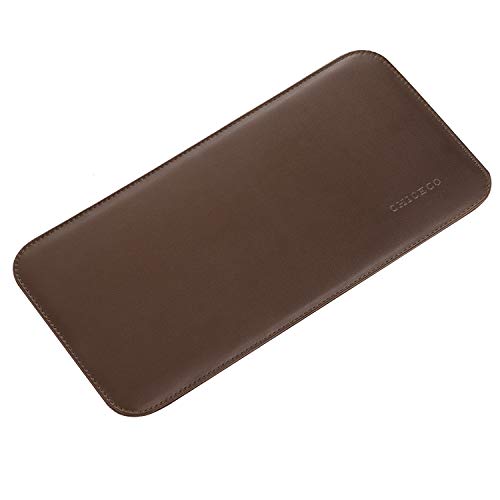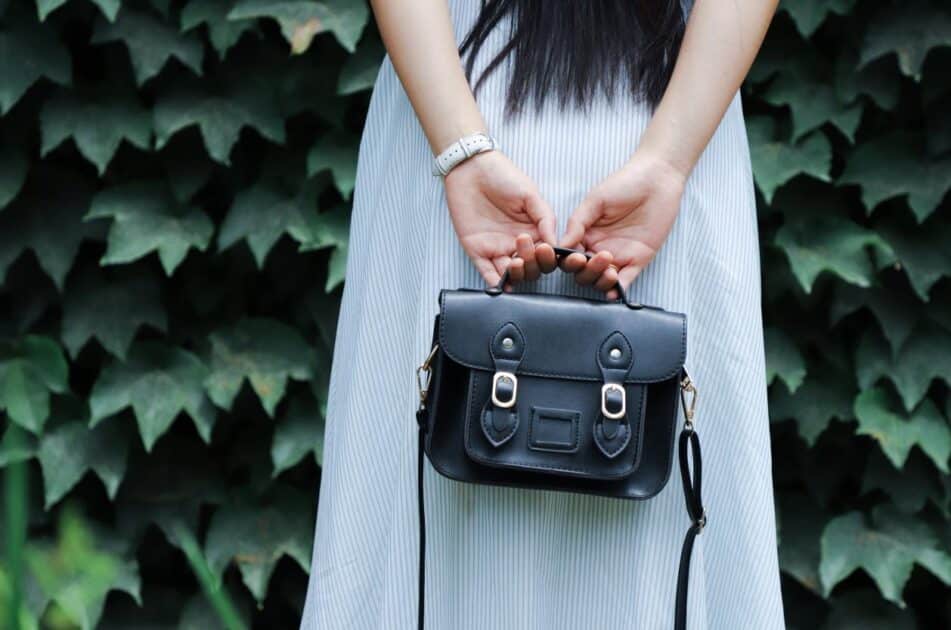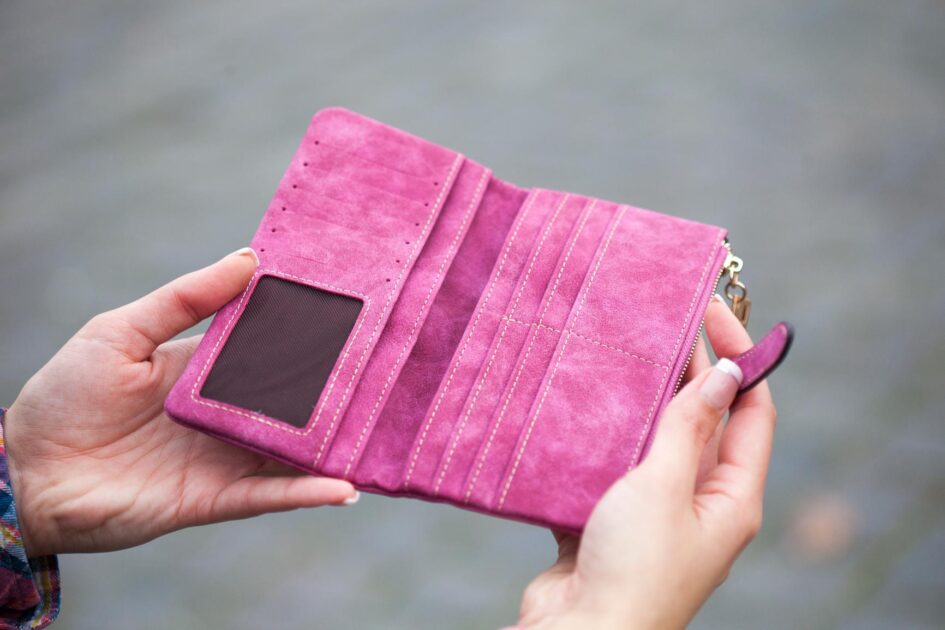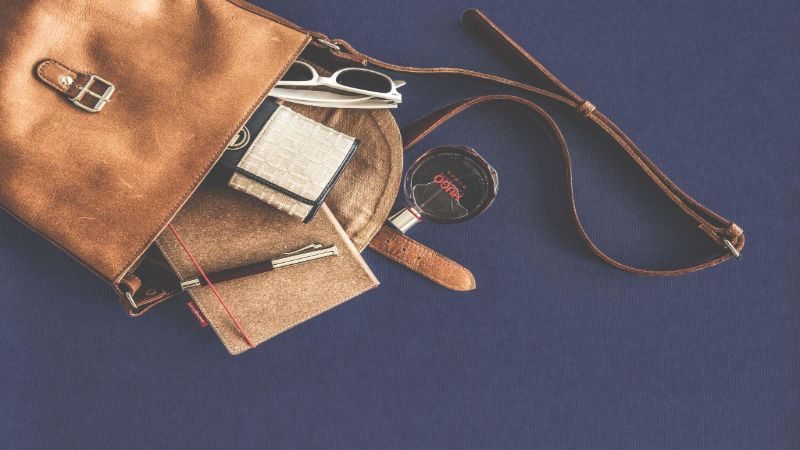Ever glanced inside your favorite handbag and recoiled at the sight of stains and crumbs nestled in the lining? You’re not alone. Keeping the inside of your handbag as spotless as the day you bought it can feel like a losing battle.

But don’t fret! A clean, fresh bag lining is within reach and doesn’t require a trip to the professionals. With a few simple tips and tricks, you’ll have that lining looking pristine in no time.
Get ready to roll up your sleeves and bring new life to the interior of your beloved bag. It’s easier than you think, and the results? Oh, they’re worth it.
The Importance of Cleaning Your Handbag Lining
Keeping your handbag lining clean is more than just a matter of aesthetics. It’s about maintaining the longevity of your cherished accessory. Throughout its life, your handbag endures a lot. From spills and stains to the accumulation of dust and crumbs, the lining becomes a hidden repository for all things unclean.
Think about what you carry in your bag daily—makeup, pens, snacks—all of which can potentially harm the fabric inside. Inks can leak, makeup can shatter, and snacks can crumble, leading to unsightly marks that, over time, may become nearly impossible to remove.
But it’s not just about looks. Bacteria and germs thrive in the warm, enclosed environment of your handbag lining. A regular cleaning routine ensures that your bag remains a clean and safe space for your belongings.
Imagine reaching inside your bag and feeling secure that everything is as clean as when you first placed it there. With a clean lining, you’re protecting your investment and ensuring that your handbag stands the test of time. Also, consider the resale value. Handbags in pristine condition, both inside and out, fetch higher prices on the pre-owned market.
Here’s what to keep in mind:
- Regular cleaning maintains the fabric’s integrity
- A stain-free lining equates to a more organized space
- Preventing bacteria build-up is crucial for your health and hygiene
- Clean linings contribute to a higher resale value
Remember, while your handbag’s exterior may showcase your style to the world, the interior tells a story of how well you care for your belongings. Take the time to look after the lining as much as you do the outside. It’s not just about cleaning; it’s about respecting the craftsmanship and dedication that went into creating your luxurious accessory. Clean linings reflect a meticulous and considerate owner—let that be you.
Preparing Your Handbag for Cleaning
Before diving into the cleaning process, proper preparation is key. First, empty your handbag completely. Remove all items, check all pockets, and don’t forget to take out any loose change or receipts. You don’t want to dampen important possessions or miss cleaning certain spots.
Next, turn the lining inside out if you can. This exposes the interior for a thorough cleaning and ensures you’re reaching all the nooks and crannies. Can’t turn it inside out? No problem. Just pull it out as far as possible.
Gently brush off the dust and debris using a soft-bristled brush—be mindful of delicate linings that can tear or stretch. For those pesky crumbs caught in the seams, a vacuum with a nozzle attachment works wonders. Keep the suction low to avoid damage.
Check for colorfastness before applying any cleaning agent. Test a small, hidden area of the lining with a dab of cleaner. If there’s no discoloration after a few minutes, you’re good to go. This step prevents unwanted surprises post-cleaning.
If there are any detachable parts inside, like a fabric pouch or a zippered pocket, take those out and clean them separately. You’ll address any hidden messes and it’s easier to clean these parts when they’re not inside the bag.
Armed with these preparation steps, you’ll tackle the cleaning task with efficiency. Your handbag’s lining is now ready for a deep clean that’ll reset it to a near-original state.
Checking the Manufacturer’s Guidelines
Before diving into the actual cleaning process, it’s crucial to check the manufacturer’s care instructions. Your handbag might have specific needs depending on the materials used, and overlooking these guidelines could damage the lining or the bag itself.
Start by locating the care label inside your handbag. This small tag often hides in the interior pockets or seams. The care label provides essential information on what to avoid and the recommended cleaning method. Some linings may only be safe for spot cleaning, while others can tolerate a gentle machine wash.
If your handbag doesn’t have a care label or if it has worn off, try visiting the manufacturer’s website. They often have detailed care instructions for their products. Here’s what to look for:
- Recommended cleaning agents: Some manufacturers specify the type of cleaners to use.
- Drying instructions: Find out whether air drying or the use of a gentle tumble in the dryer is suitable.
- Temperature settings: Heat can sometimes warp or melt certain materials. Make sure you know the right temperature for washing and drying.
In cases where you can’t find any information, stick to gentle, unobtrusive cleaning methods. Test a small area that’s not easily visible to ensure the chosen cleaning agent won’t cause damage or discoloration.
« How to Close Purse Without Zipper: Secure Your Bag Stylishly
Handbag Appraisal Secrets: Get the Best Value Assessment Now »
It’s also a good idea to reach out to the manufacturer’s customer service. They can often provide the guidance you need or direct you to professional cleaning services designed for their handbags. This can be particularly important for designer handbags, where maintaining the integrity of the material is essential for preserving its value.
Remember, preserving your handbag takes precedence. If in doubt, professional cleaners are your go-to resource for maintaining the lining in pristine condition without risking damage. They have the experience and the right tools to clean delicate fabrics and materials effectively.
Removing Loose Debris from the Lining
Before diving into any wet cleaning methods, you’ll want to ensure that all loose debris is removed from the lining of your handbag. Start by emptying your bag completely. Turn it upside down and gently shake out the contents over a trash bin or a sheet of newspaper to collect the fallout.
Use a vacuum cleaner with a small brush attachment to suction up any lingering dirt, dust, or crumbs. Take care to be gentle – the lining can be delicate. Focus on seams and pockets where debris tends to accumulate.
For those stubborn particles clinging to the fabric:
- Use a lint roller or sticky tape wrapped around your fingers.
- Lightly tap instead of pressing hard.
- Sticky residues left by sweets or gum might need special attention.
Spot clean these areas with a slightly dampened cloth – dab, don’t rub. If you’re dealing with velvet or other sensitive materials, consider using a soft-bristled brush to dislodge any particles. Test a small, inconspicuous area first to ensure the material can handle the brush without damage.
Remember, pre-cleaning is crucial. The goal is to remove as much loose debris as possible without spreading it further or pushing it deeper into the fabric. Regular maintenance like this keeps the cleaning process more manageable and preserves the integrity of your handbag lining.
Choosing the Right Cleaning Solution
When facing stubborn stains or lingering odors in your handbag’s lining, picking an appropriate cleaning solution is key. Think fabric first. Delicate materials like silk or suede demand specialized cleaners to avoid damage, whereas cotton or polyester can handle gentler, more universal options.
For Synthetic Linings
If you’ve got a synthetic lining, you’re in luck – these are typically less fussy. A simple mix of warm water and gentle detergent can do wonders. Use a soft cloth, dip it in the solution, and dab at the problem areas. Remember, less is more; you don’t want to oversaturate the fabric.
For Natural Fibers
Natural fibers require a tad more care. Wool linings, for example, may need a specific wool-safe cleaner. Always spot-test any solution in an inconspicuous area to ensure there’s no discoloration or damage before tackling the larger area.
For Leather Trims
Leather trims are yet another beast. Special leather cleaners are designed to clean without stripping essential oils. Apply cleaner to a soft cloth, and work into the leather in a gentle, buffing motion. Avoid contact with the actual fabric lining; it requires a different treatment.
DIY Solutions
Maybe you’re into DIY solutions. If so, a homemade cleaner of vinegar and water at a one-to-one ratio can address mild stains and smells, but it’s vital to use it sparingly. Overly acidic solutions can harm certain materials.
After choosing your cleaner, follow these steps:
- Apply the cleaner with a soft brush or cloth to the stained area.
- Use light, circular motions to lift the stain.
- Wipe away cleaner residue with a clean, slightly damp cloth.
- Allow the lining to air dry thoroughly.
Regular maintenance with the right cleaning solution can significantly extend the life and appearance of your handbag’s lining. But when in doubt, consult a professional – especially for designer bags or unfamiliar materials. They’ll provide the expertise needed to ensure your bag stays in impeccable shape.
Testing the Cleaning Solution on a Small, Hidden Area
Before you take the plunge and clean the entire lining, it’s essential to test your chosen cleaner. Find an inconspicuous spot inside your handbag—perhaps beneath a pocket or along the seam. This test spot becomes your secret laboratory. It’s all about ensuring compatibility between the cleaner and the material.
Apply a small amount of the solution onto a cotton swab or soft cloth. Dab it gently onto the test area, then wait. Give it a good 10-15 minutes. Your goal is to observe any adverse reactions like discoloration or fabric damage. No changes? You’re good to go. Any sign of damage, and it’s time to rethink your approach.
Remember, different materials react uniquely to cleaners. What’s harmless to synthetic fibers could wreak havoc on silk. Your vigilance in this step prevents potential heartache from ruining a treasured accessory.
If you spot damage, don’t despair. There’s a myriad of cleaning formulas out there. Might be time to consider a less aggressive option. Sometimes, tweaking the solution’s strength can make all the difference. Dilute stronger cleaners with water, but do so gradually, testing as you go.
Once your test spot passes with flying colors, you can clean with confidence. Start from less visible areas and progress to more prominent ones. This method keeps any learning curve mishaps out of the spotlight.
Through this testing process, you’re not just cleaning; you’re learning the nuances of your handbag’s materials. This knowledge is power—power to maintain the pristine condition of your fashion investments for years to come.
Cleaning the Handbag Lining
Once you’ve determined the best cleaning solution for your handbag lining, ease into the cleaning process. First, empty your handbag entirely, shaking out any debris or dirt. You don’t want any stray items causing a hindrance.
Start by softly brushing the lining with a soft-bristled brush, targeting loose dust or dirt particles. Ensure that you’re gentle to avoid any tears. Next, prepare your chosen cleaner, keeping in mind its compatibility with the fabric.
Gently apply the testing-approved solution, using a soft cloth or sponge to delicately dab the lining. Steer clear of scrubbing motions that might damage the material. Instead, think of the process as more of patting the dirt out rather than forcing it.
For liquid spills or stains, you might need a targeted approach. Apply a small amount of the cleaner directly onto the stain and softly blot. Remember, patience is key with stubborn stains; repeated gentle treatment is better than one aggressive attempt.
If the lining needs a broader clean, work in sections to maintain control over the wetness and to avoid over-saturating the fabric. Be mindful of the cleaner’s directions—some might require a rinse with water, while others simply need to air dry.
Ventilation is your next best friend. After cleaning, allow your handbag to air dry, ideally in an open, airy space but out of direct sunlight. Direct heat can harm the bag’s structure and cause colors to fade.
Throughout this process, keep checking the material’s reaction to the cleaning solution. If it’s your first time cleaning this handbag, you’ll want to be especially observant of any changes.
As you work your way through cleaning, remember that the lining is not just a part of the bag—it’s as important as the exterior when it comes to the overall look and longevity of your accessory. Regular, careful cleaning extends the life of your handbag and keeps it looking as luxurious as the day you bought it.
Drying and Reconditioning the Lining
After cleaning your handbag’s lining, drying is a critical step. Never use a hairdryer or place the bag in direct sunlight because these methods can cause the fabric to warp or the color to fade. Instead, let your handbag air dry in a shaded, well-ventilated area. Prop the bag open to allow air flow and help the lining dry evenly. This can take several hours, so you’ll need to be patient.
While the lining is drying, avoid the temptation to check if it’s done by poking or prodding—it could misshape the fabric or create new creases. Instead, lightly touch the outside of the bag to gauge moisture levels.
Once your handbag is dry to the touch, it’s time for reconditioning. Depending on the lining material, you may want to apply a fabric conditioner. This step helps to:
- Restore softness
- Prevent static
- Add a protective layer against future stains
When selecting a conditioner, opt for one that’s compatible with your handbag’s lining. Apply it sparingly; over-application can leave the lining greasy or damp again. Use a clean, soft cloth to distribute the conditioner evenly across the surface.
Monitoring your handbag after the whole cleaning process is crucial. Some materials may harden or become brittle once dried. If you notice such changes, consider using specialized products formulated for the specific lining material to restore its suppleness.
Remember, regular maintenance not only keeps your handbag clean but also preserves the lining’s integrity, ensuring that your fashion investment stands the test of time.
Tips for Maintaining a Clean Handbag Lining
Keeping your handbag’s interior pristine requires vigilance and a few insider tricks. Think of your handbag lining as the unsung hero of your bag—it’s where the brunt of messes can occur, yet it’s often overlooked. Here’s how you can keep it in top-notch condition:
Preventative Measures
- Avoid Overloading: Cramming too many items in your handbag can cause spills and stains. Carry only what you need.
- Use Pouches: Segregate items like makeup and pens in separate pouches to prevent leaks onto the lining.
Regular Cleaning Routine
Develop a habit of weekly clean-ups for your handbag lining to catch any spills or debris early on.
- Empty your bag completely.
- Use a lint roller or tape to pick up dust and crumbs.
Immediate Spill Management
Act fast on spills – the quicker you address them, the less likely they’ll set.
- Blot out spills immediately with a clean, dry cloth.
- Avoid rubbing as it can push the stain deeper.
Smart Storage
When not in use, store your handbag properly.
- Stuff it with tissue paper to maintain shape.
- Keep it in a dust bag or pillowcase to protect against dirt and sunlight.
Invest in Good Tools
Quality cleaning tools and products are essential.
- Purchase a soft-bristled brush for gentle surface cleaning.
- Consider a handbag-specific cleaner for tougher stains.
Caring for the lining of your handbag isn’t just about dealing with messes; it’s about taking proactive steps to ensure it remains as flawless as the day you bought it. With these tips, you can ensure your handbag looks great from the inside out. What’s more, giving your handbag the TLC it deserves will certainly extend its life, making it a staple accessory for years to come. Just remember, routine care is the secret to a lasting, stylish companion on your arm. Keep up with these habits, and your handbag will continue to complement your fashion sense and lifestyle seamlessly.
Conclusion
So there you have it! With a bit of care and the right techniques, you can keep your handbag lining looking as good as new. Remember, a stitch in time saves nine, so don’t wait for a spill to turn into a stain. Stay ahead of the game with regular upkeep and your handbag will thank you for it. Here’s to many more years of stepping out in style with your spotless accessory by your side!
Frequently Asked Questions
How can I prevent my handbag lining from getting dirty?
To prevent your handbag lining from getting dirty, avoid overloading the bag, use separate pouches for items that may leak or spill, and avoid placing uncapped pens or makeup items directly inside.
What’s the best way to pick up dust and crumbs from the lining of my handbag?
Using a lint roller or adhesive tape are effective ways to pick up dust and crumbs from the lining of your handbag. Gently roll or press them against the lining to collect the debris.
How should I deal with spills inside my handbag?
If a spill occurs inside your handbag, immediately blot it with a clean, absorbent cloth. Avoid rubbing the spill as it can cause the liquid to spread or the lining to deteriorate.
What are smart storage practices for handbags?
Smart storage practices include stuffing your handbag with tissue paper to maintain its shape and storing it in a dust bag or pillowcase to protect it from dust and light damage when not in use.
Why is it important to use quality cleaning tools and products on my handbag?
Using quality cleaning tools and products is important to safely clean and preserve the material of your handbag without causing damage, ensuring its longevity and maintaining its appearance.










